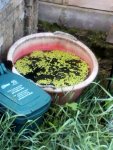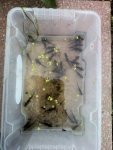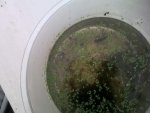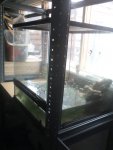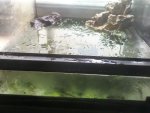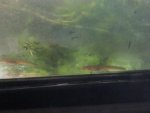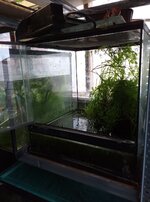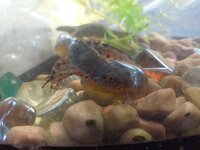xxianxx
Well-known member
- Joined
- May 19, 2011
- Messages
- 2,748
- Reaction score
- 150
- Points
- 63
- Location
- South Wales, Gwent
- Country
- Wales
- Display Name
- nai live
Just rounded up this year's alpines from their tub. Earlier in the year I dropped 60ish larvae into an aged tub in my garden. It is just left to lie fallow all year, I throw a few pellets in there to feed the inverts every few weeks, it's loaded with snails, daphnia, mozzy larvae , hog lice and blackworm. Elodea, duckweed and algae are the plants in there. I collected 32 alpines, all in good health and some near to morphing, will pull them earlier next year as I don't want them bailing. I consistently get a 50% survival rate, the smaller larvae get cannibalised, a few get predated on by water bugs but they grow bigger and faster this way than raising them indoors. I'm aiming for quality over quantity and this low effort raising does the job. All I do is monitor the food supply and add extra as it runs low, mske sure rain doesn't overflow the tub, remove any predatory bugs I spot, check water quality which is always good but I do it anyway.

